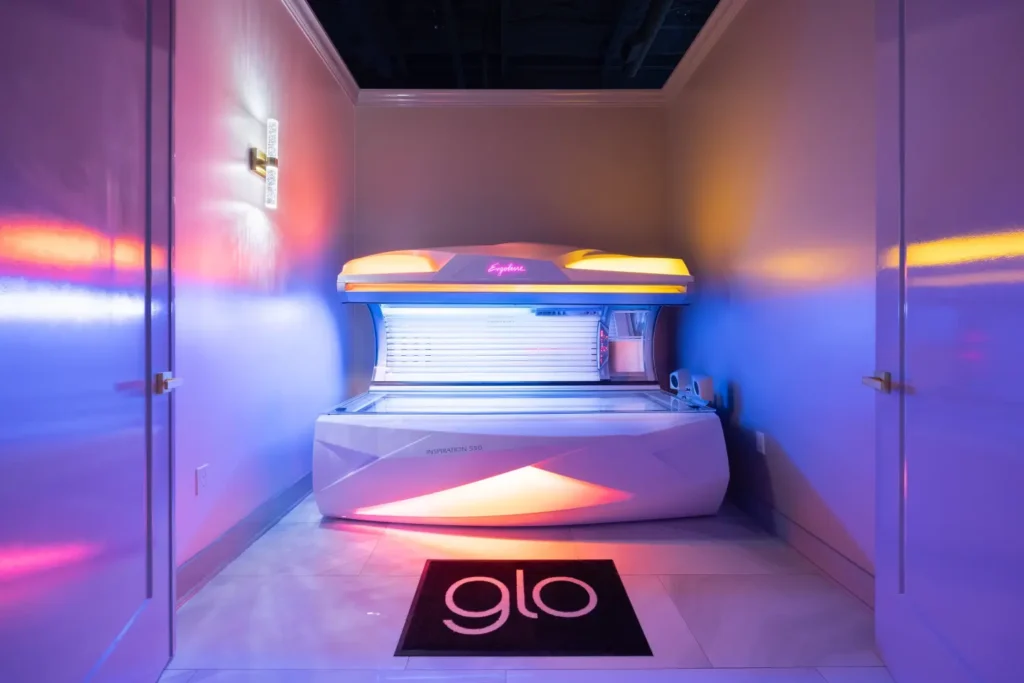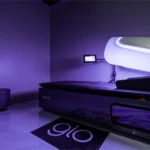It’s no secret that tanning beds have become incredibly popular over the years. The instant sun-kissed glow that they offer is undeniably appealing. However, as much as we love the bronze look, it’s crucial to understand what the ideal frequency is for using tanning beds.
Recommended Frequency of Tanning Bed Use
For beginners, it’s recommended to start slow. During the first week, limit your sessions to two to three times. Each session should be brief, around 3-10 minutes, depending on your skin type.
After the initial week, if your skin is responding well (no burns or excessive redness), you can gradually increase your sessions to three to four times per week. The duration of each session can also be slowly increased, but should never exceed the maximum recommended time for your skin type and the specific tanning bed you’re using.
Once you’ve achieved your desired tan, you can switch to ‘maintenance mode’. This usually means reducing your sessions to once or twice a week. The goal here is to maintain your tan without overexposing your skin to UV rays.
Now, it’s important to note that these are just general guidelines. The frequency and duration of your tanning sessions should be tailored to your individual skin type, age, and overall health. Remember that it’s best to start slow, and steady to achieve that perfect glow.
How Does a Skin Type Impact the Frequency?
Skin types are generally categorized into six types, ranging from Type I (very fair) to Type VI (very dark).
Type I skin is the fairest and most delicate of all, often characterized by red or blonde hair, light-colored eyes, and the presence of freckles. If you have this skin type, you should exercise extreme caution when it comes to tanning, as your skin is highly prone to burning and hardly ever tans, either in direct sunlight or under UV light.
For those with Type I skin, it is generally advisable to avoid traditional tanning methods to prevent skin damage. However, if you still wish to achieve a tanned look, spray tanning is a smarter and more suitable option.
On the other end of the spectrum, Type VI skin, usually dark brown to black, has natural protection against sunburn but is still at risk of overexposure and damage. If you’re lucky enough to fall into this category, you might be able to handle longer sessions, up to 10 minutes, and more frequent visits, around three to four times a week.
Now, for those in between, it’s a sliding scale. The general rule is: the fairer your skin, the less exposure you need.
But regardless of your skin type, remember that moderation is key. Even if your skin is darker and less prone to burning, it doesn’t mean you’re immune to the risks of overexposure. Ultimately, the goal is a healthy, glowing tan, not a race to see who can get the darkest the fastest.
Tips for Smart Tanning Bed Usage
Alright, now that we’ve covered all the basics, let’s dive into some top tips for smart tanning bed usage.
- Prep Your Skin: Always clean your skin before you hop into a tanning bed. Makeup, oil, and dirt can interfere with the tanning process and may even lead to uneven tanning.
- Use Indoor Tanning Lotion: These lotions are designed specifically for tanning beds and can enhance the tanning process while keeping your skin moisturized. Dry skin doesn’t tan as well, so make sure to keep it hydrated!
- Protect Your Eyes: This is non-negotiable! Always wear protective eyewear. Regular sunglasses won’t cut it as they don’t adequately protect against the intensity of UV radiation in tanning beds.
- Moderation is Key: As we’ve mentioned before, don’t overdo it. Stick to the recommended frequency and duration for your skin type. If you notice any signs of burning or excessive redness, give your skin a break.
- Post-Tanning Care: After your session, hydrate and nourish your skin with a good moisturizer. This helps prolong your tan and keeps your skin healthy. Explore our complete guide for post-tanning bed care to prolong your tan.
- Consult a Professional: If you’re unsure about anything, don’t hesitate to consult your Glo Tanning Spa Consultant. They can provide personalized advice based on your skin type, age, and overall health.
Can You Use Sunscreen in a Tanning Bed?
If you apply sunscreen before hopping into a tanning bed, it will limit the amount of UV radiation that reaches your skin, which in turn, reduces the effectiveness of your tanning session. So you shouldn’t use sunscreen before your tanning session. Clear, product-free skin is ideal.
Consulting your Glo Tanning Spa Consultant about how much time you should spend each time will prevent the need for sunscreen.
Can I Use a Tanning Bed if I Have Sensitive Skin?
Sensitive skin can react more intensely to UV radiation, leading to a higher risk of burns, rashes, or other skin irritations. So, if you have sensitive skin, it’s crucial to approach tanning beds with a good deal of care.
First, always start with shorter, less frequent sessions. This “less is more” approach allows you to gauge how your skin reacts to UV rays. If you notice any signs of irritation or discomfort, give your skin a break.
Secondly, invest in a high-quality indoor tanning lotion designed for sensitive skin. These lotions can help keep your skin moisturized and may contain ingredients that soothe the skin, reducing the risk of irritation.
Additionally, be aware that certain foods and medications can increase your skin’s sensitivity to sunlight, which also applies to UV light from tanning beds. Some common examples include certain antibiotics, anti-inflammatory drugs, and spicy or processed food. For a more comprehensive list of medications and foods that can increase photosensitivity, consult with a healthcare provider.
As the question of this article is the one mostly asked by the tanning novices, here’s a guide on finding the best tanning salon for first timers.
FAQ
How long is a tanning bed session?
Tanning bed sessions typically range from 5 to 10 minutes. But this can change depending on
your skin type and your tanning goals. If you’re new to this type of tanning, we recommend shorter sessions to avoid overexposure and see how your skin reacts. At Glo Tanning, our Spa Consultants are available to assist you with any questions you might have.
Does sunscreen work in a tanning bed?
Sunscreen works in a tanning bed just as it does outdoors. It creates a barrier between your skin and UV rays.
How long should I tan in a tanning bed?
The duration of your session depends on your skin type and tanning experience. Beginners should start with 5-7 minute sessions and gradually increase the time as their skin builds tolerance.
How often should you use a tanning bed?
If you’re new to tanning beds, you should start with 2-3 sessions per week. Once you’ve achieved your desired tan, maintenance sessions of 1-2 times per week are usually more than enough.
How many sunbed sessions do I need to get a tan?
It may take 3-5 sessions to see noticeable results depending on the type of skin.
What products do I use after tanning?
After tanning, hydration is crucial to maintain your tan and keep your skin healthy. Use a tan extender lotion like Indulge Extender, which offers deep hydration, prolongs your tan, and prevents peeling. Look for products with aloe vera, shea butter, or coconut oil to replenish moisture and soothe your skin.
Should I apply any products before using a tanning bed?
Yes. Using products like tanning lotions before a tanning bed session can improve your results. A good pre-tan lotion helps prepare your skin, accelerates the tanning process, and keeps your skin moisturized to ensure an even tan.
Can people with fair skin use a tanning bed?
Yes, people with fair skin can use a tanning bed, but extra caution is essential. If your skin is classified as Type I, we recommend using a spray tan instead. However, if you choose to use a tanning bed, start slow and steady with short exposure times (3-5 minutes) and limit sessions to 2-3 times per week.
How do I lay in a tanning bed to get the best results?
To achieve the best results, position yourself with your arms slightly away from your sides and keep your legs slightly apart. Avoid resting your head or limbs in the same position for too long to prevent an uneven tan.
Final Thoughts
Tanning is not a one-size-fits-all activity. It’s a personal journey that should be tailored to your unique skin type and needs. The golden rule is always to prioritize your skin health above all else. It’s not about chasing the darkest tan at the expense of your skin. It’s about finding a balance that lets you achieve your desired glow both responsibly and healthily.







